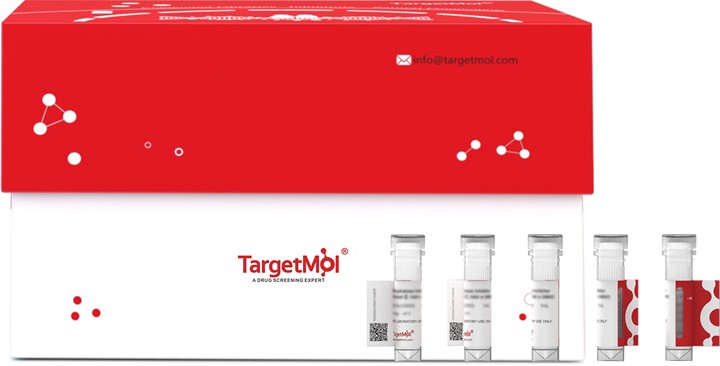 Your shopping cart is currently empty
Your shopping cart is currently empty
WBP1 Protein, Human, Recombinant (His)
Catalog No. TMPJ-01272
WW Domain-Binding Protein 1 (WBP1) is widely expressed in many tissues, but it is lowly expressed in the lung, placenta, kidney, and liver. WBP1 contains two WW-binding motifs: WW-binding 1 and WW-binding 2 that are involved in mediating protein-protein interactions through the binding of polyproline ligands. The WW-binding domain is composed of 38 to 40 semi-conserved amino acids shared by proteins with diverse functions including structural, regulatory, and signaling proteins. In addition, WBP1 also encodes a ligand of the WW domain of the Yes kinase-associated protein. This function has not been determined.

WBP1 Protein, Human, Recombinant (His)
Catalog No. TMPJ-01272
WW Domain-Binding Protein 1 (WBP1) is widely expressed in many tissues, but it is lowly expressed in the lung, placenta, kidney, and liver. WBP1 contains two WW-binding motifs: WW-binding 1 and WW-binding 2 that are involved in mediating protein-protein interactions through the binding of polyproline ligands. The WW-binding domain is composed of 38 to 40 semi-conserved amino acids shared by proteins with diverse functions including structural, regulatory, and signaling proteins. In addition, WBP1 also encodes a ligand of the WW domain of the Yes kinase-associated protein. This function has not been determined.
| Pack Size | Price | USA Warehouse | Global Warehouse | Quantity |
|---|---|---|---|---|
| 5 μg | $112 | 7-10 days | 7-10 days | |
| 10 μg | $183 | 7-10 days | 7-10 days | |
| 20 μg | $292 | 7-10 days | 7-10 days | |
| 50 μg | $545 | 7-10 days | 7-10 days | |
| 100 μg | $792 | 7-10 days | 7-10 days | |
| 200 μg | $1,150 | 7-10 days | 7-10 days | |
| 500 μg | $1,900 | 7-10 days | 7-10 days | |
| 1 mg | $2,730 | 7-10 days | 7-10 days |
Add to Cart
Add to Quotation
In Stock Estimated shipping dateUSA Warehouse [1-2 days] Global Warehouse [5-7 days]
All TargetMol products are for research purposes only and cannot be used for human consumption. We do not provide products or services to individuals. Please comply with the intended use and do not use TargetMol products for any other purpose.
Resource Download
Product Information
| Biological Activity | Activity has not been tested. It is theoretically active, but we cannot guarantee it. If you require protein activity, we recommend choosing the eukaryotic expression version first. |
| Description | WW Domain-Binding Protein 1 (WBP1) is widely expressed in many tissues, but it is lowly expressed in the lung, placenta, kidney, and liver. WBP1 contains two WW-binding motifs: WW-binding 1 and WW-binding 2 that are involved in mediating protein-protein interactions through the binding of polyproline ligands. The WW-binding domain is composed of 38 to 40 semi-conserved amino acids shared by proteins with diverse functions including structural, regulatory, and signaling proteins. In addition, WBP1 also encodes a ligand of the WW domain of the Yes kinase-associated protein. This function has not been determined. |
| Species | Human |
| Expression System | E. coli |
| Tag | N-6xHis |
| Accession Number | Q96G27 |
| Synonyms | WW Domain-Binding Protein 1,WBP-1,WBP1 |
| Amino Acid | Gly170-Pro269 |
| Construction | Gly170-Pro269 |
| Protein Purity | Greater than 90% as determined by reducing SDS-PAGE. (QC verified) |
| Molecular Weight | 20 KDa (reducing condition) |
| Endotoxin | < 0.1 ng/µg (1 EU/µg) as determined by LAL test. |
| Formulation | Lyophilized from a solution filtered through a 0.22 μm filter, containing 20 mM PB, 150 mM NaCl, pH 7.2. |
| Reconstitution | Reconstitute the lyophilized protein in distilled water. The product concentration should not be less than 100 μg/ml. Before opening, centrifuge the tube to collect powder at the bottom. After adding the reconstitution buffer, avoid vortexing or pipetting for mixing. |
| Stability & Storage | Lyophilized powders can be stably stored for over 12 months, while liquid products can be stored for 6-12 months at -80°C. For reconstituted protein solutions, the solution can be stored at -20°C to -80°C for at least 3 months. Please avoid multiple freeze-thaw cycles and store products in aliquots. |
| Shipping | In general, Lyophilized powders are shipping with blue ice. Solutions are shipping with dry ice. |
| Research Background | WW Domain-Binding Protein 1 (WBP1) is widely expressed in many tissues, but it is lowly expressed in the lung, placenta, kidney, and liver. WBP1 contains two WW-binding motifs: WW-binding 1 and WW-binding 2 that are involved in mediating protein-protein interactions through the binding of polyproline ligands. The WW-binding domain is composed of 38 to 40 semi-conserved amino acids shared by proteins with diverse functions including structural, regulatory, and signaling proteins. In addition, WBP1 also encodes a ligand of the WW domain of the Yes kinase-associated protein. This function has not been determined. |
Dose Conversion
You can also refer to dose conversion for different animals. More
Calculator
Tech Support
Please read the User Guide of Recombinant Proteins for more specific information.
Keywords
Generate Quote
Catalog No.: Cas No.:
Add
| Size | Quantity | Unit Price | Amount | Operation |
|---|
Generate Quote

Copyright © 2015-2025 TargetMol Chemicals Inc. All Rights Reserved.



